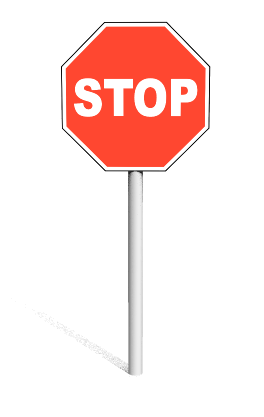Chapter 9 | Scaling Images
Summer 2019 Software Update
In Virtual CRASH 3 or 4, users can import aerial photographs and scale diagrams in nearly any image format, including .tif (or .tiff) format. As of the Summer 2019 Software Update, you can now scale images using the Easy Alignment Tool, the Smart Alignment Tool, or by simply inputting the physical pixel size. To learn about all the ways to scale orthomosaics and align them with point clouds or total station (or RTK GPS) points in VC4, see the following blog post: https://www.vcrashusa.com/blog/2019/6/2/summer-2019-software-update
Introduction
Virtual CRASH allows users to quickly and easily scale images within the simulation environment. This is an extremely useful feature for importing scale diagrams created in other CAD utilities, or for importing orthorectified aerial imagery (such as from Google Earth) for use as a backdrop of a scene diagram or simulation. In this write-up we will walk through the steps of importing a Google Earth aerial image and properly scaling it for use within a Virtual CRASH scene diagram. You can find a video of this procedure below:
Select Imagery from Google Earth
As a first step, let’s select our aerial image from Google Earth. Take care to ensure that the “camera” angle is directed orthogonal to the ground plane to minimize potential scaling distortions that can be caused by perspective camera views. You can adjust the camera angle by using the down arrow in the view control in the upper right corner of Google Earth.
Next, take a screen capture of your aerial image from your desktop, or save the image using the File > Save command within Google Earth.
Use an image manipulation application such as Windows’ Paint to remove artifacts and unwanted features by simply copying and pasting sections of unblemished road surface to the blemished areas with the selection tool.
Import Image into Virtual CRASH
Let’s now bring our image into the simulation environment. In Virtual CRASH, left-click on “Project,” and then select “Import.”
In the lower right corner of the file manager window, ensure that the file extensions option “bmp, gif, jpeg, png, tiff, exif, etc.” is selected so that your file becomes visible in the window.
You should now see your image on the xy plane of the simulation environment.
Next, switch to the top down projected view:
Then left-click on the “Select And Move” cursor control:
Scaling Procedure
Place Image into Scaled Image Mode
Left-click on the image to select your image within the environment, then right-click to bring up the quick control dialog. Move your mouse cursor down to the “use” option and left-click on “original image,” then left-click again on “rectified image.” This will place your image into “scaled image” mode as indicated by the dialog. You’ll notice your image seems to shrink in apparent size. Do not be concerned with this.
Select the Scale Tool
Left-click on the “Scale” tool using the upper toolbar selection type icon. This will bring up the scale tool which should now be visible on top of your image. Do not be concerned with the units being displayed in metric.
Align the Scale Tool with the Image Scale
Using the control grips (black dots) on each end of the scale tool, place the tips of each arrow on your image’s scale. Zoom in on your image as needed to ensure good alignment between the scale tool and your image’s scale.
Go to the Scale Setting Input
Next, left-click on “edit” in the left side control panel, and then left-click on “scale” in the “properties” menu. This will reveal the current scale setting for the scale tool (note the current scale is 1 meter = 3.281 feet).
Input the Proper Scale
Now, input the proper length for the scale tool to match your image’s scale. In this example, the scale tool should be set to 90 feet. You should see the size of your image enlarge.
Put Image into Object Mode
Now your image is properly scaled. Place your image into “Object” select model by going to the upper toolbar and left-clicking on “Object.” This will deactivate the set scale mode.
It is advisable that you “freeze” your image now so that no accidental modifications or movements can be made as you do further work on your project. Simply left-click on the freeze selection box in the left-control panel.
Your scaled image is now ready to be used!
Tags: How to use scale diagram, importing scale diagram, import scale diagram, importing aerial photo, import aerial photo, import photograph, importing photograph, make diagram to scale, scaling image, scaling photograph, scale tool, how to import diagram, importing diagrams, importing image file, image file, jpg, png, bmp, jpeg.
© 2024 Virtual CRASH, LLC. All Rights Reserved



